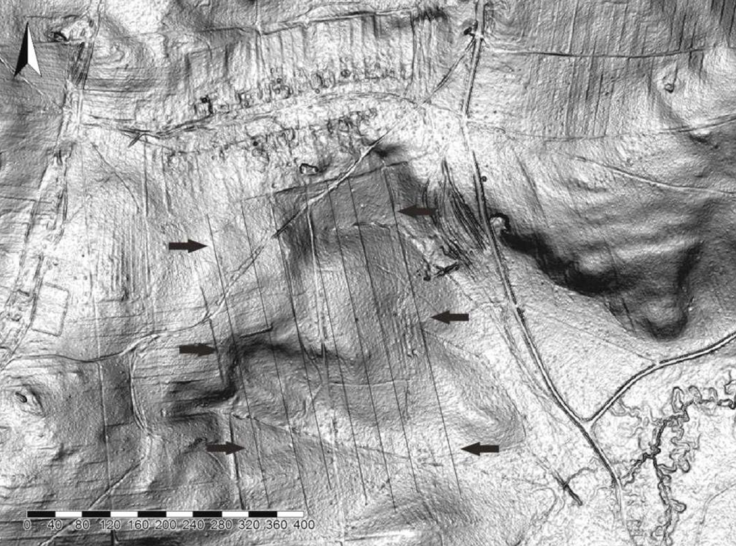
PHOTO: ibtimes.co.uk
STRZELIN, POLAND – the remains of a 700-year-old abandoned village have been rediscovered after nearly 70 years of searching. The question remains: why was it abandoned in the first place?
The village is called Goschwitz, and it’s located in southwest Poland. It is thought by historians to have been founded in the late 13th century by Bolko I the Strict, Duke of Löwenberg. The land was originally owned by a local noble family. He’d bought it in hopes of turning it into an investment, and quickly built a farming village.
We find mentions of Goschwitz in historical records from Poland, but curiously, just 50 years after it was built, all record of Goschwitz vanished. Apparently, so did the village. Bit by bit, the surrounding forest crept in and grew over the building site. Goschwitz was swallowed by the land it was planted on, and wouldn’t be seen again for 700 years.
Researchers have been searching for the village for 70 years, but they were reluctant to actually start digging things up until a site had been confirmed. Finally, with help from airborne laser scanning, the site has been found. The village was 738 feet long, and 1328 feet wide. It was made up of about twenty farmhouses arranged around a central square. Curiously, none of them had stone foundations. None of the framing has survived 700 years of exposure, burial, and subsequent rot.

PHOTO: ibtimes.co.uk
According to archaeologist Maria Legut-Pintal of Wroclaw University of Science and Technology, the site is incredibly important. She made the discovery, and she says it captures a snapshot of Polish life during the 13th century – much like the site of Pompeii captures a snapshot of Roman life.
Archaeologists are still unsure as to why the village was abandoned. Maria Legut-Pintal has two hypotheses.
She believes that the most likely reason is economic. The soil in this region of Poland is poor. It was a hard place for a farming community to survive.
“One possibility is that it was abandoned for economic reasons – the shape or layout of village typical for lowland areas was used in upland area. The quality of soil was poor, so economic bases were insufficient – it was simply too hard to live there.” – Maria Legut-Pintal.
On the other hand, there is a less likely, but much more interesting option: the village was destroyed during the Hussite Wars.
The Hussite Wars, also called the Bohemian Wars or the Hussite Revolution, were fought between a radical religious group called the Hussites, and different European monarchs under control of the Catholic Church. The wars lasted from 1419 to 1434. The Hussites were mostly Czech, and formed a major military power. They were such a bother to the Catholic Church that the Pope actually declared five major crusades against them, enlisting European powers to help fight the heretics off. Eventually, the fighting ended after 1434 when a more moderate faction of Hussites defeated the radical Taborite faction. After that, the Hussites submitted to the King of Bohemia (now Czechoslovakia), and the Catholic Church.
The Hussites were actually aided at different times throughout this conflict by Poland. The conflict between the Papacy and the Hussites was spread throughout Europe. Battles were fought, leaving destruction in their wake. It is possible that, in all this conflict, Goschwitz was caught in the middle and abandoned.
Of course, we won’t know until a little more investigation takes place.
“We will be able to answer this question only after excavation studies, when we establish the exact time of village abandonment.” – Maria Legut-Pintal.

